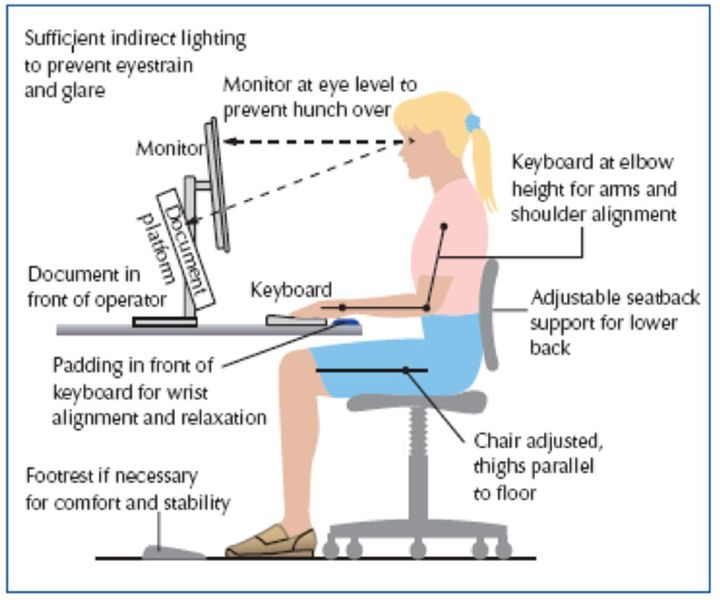
This is the third entry into the ‘Smooth Science’ series which will consist of reporting relating to science and technology - including the growing gaming community. The first and second are also available on Huffington Post. Here we look at how technology could help solve posture issues created from prolonged computer usage.
Bad Posture Can Cause Problems
Since the advent of personal computers and later laptops, the term 'computer back' has slowly begun to spread through our social conscious. The medical diagnosis for computer back is posterior cervical dorsal syndrome. Dr. Vic Weatherall describes the condition:
A very common postural syndrome in modern society involves excessive rearward curving of your lower, middle, and upper back; forward drawn head; rounded shoulders; and excessive forward curving of your upper neck...It is a natural result of prolonged sitting work, especially with computers.
The syndrome can lead to muscle tension in the chest, neck, shoulders, and joint dysfunction in the back. Posterior cervical dorsal syndrome is one of the several conditions almost exclusively found to result from prolonged computer use, leading to the creation of guides to help avid computer users implement correct posture.

Picture displaying the proper way to sit at a computer desk.
The Power Of Ergonomics
Luckily, science and technology are beginning to provide further solutions to those suffering from aches and pains due to working on a desktop or laptop for multiple hours a day. Ergonomics is the process used to provide relief, which Merriam-Webster defines as, “An applied science concerned with designing and arranging things people use so that the people and things interact most efficiently and safely.”
The Occupational Safety and Health Administration (OSHA) is a major proponent of ergonomics and advocates for healthy workplace environments stating, "Training is an important element in the ergonomic process. Training should be conducted in a language and vocabulary that all workers understand and is best provided by individuals who have experience with ergonomic issues in your particular industry."
Proper implementation of ergonomic procedures will help reduce wear on the body. Moving while at a computer station, performing exercises, and staying generally physically fit will help workers remain free of posture related injuries.
Technological Solutions
According to the University of Michigan, laptops need to be adapted if they are to be used for long periods of time. Stating the nature of their build makes it difficult for work usage - which is problematic considering how common laptops have become for work and school due to their portability.
Kelvin Sim an engineer who recently moved from Singapore to Vancouver developed the Veego Stand - a project being crowdfunded to make laptops more ergonomic friendly to users by raising the eye level of laptops - helping correct back pains from hunching, while also being easy to transport with a laptop due to it being lightweight and thin.
In the past, laptop users have used external keyboards, mice, and bulky laptop stands in order to alleviate the problems associated with long work sessions. New advances in technology like the Veego Stand are creative and practical and hopefully will become a staple as our society becomes further dependent on workers using computers.
To keep up with Walter’s journalism you can follow him @GentlemansHall on Twitter
